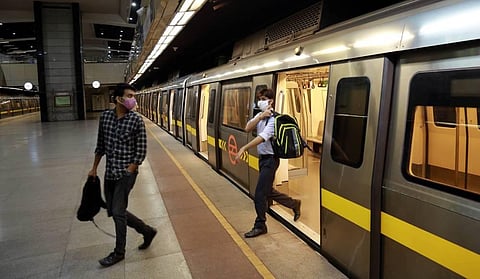

NEW DELHI: With a service network of 391 km, 286 stations and 10 different corridors including the Airport line, the Delhi Metro on Friday entered into the 20th year of its operations and unveiled an exhibition on its journey at the Kashmere Gate station.
Delhi Metro started its service with 8.5km, six stations and one route in 2002. The location from where the then Prime Minister Atal Bihari Vajpayee had inaugurated the first metro corridor in the national capital on this day in 2002 has been redeveloped into a full-fledged exhibition with photographs and anecdotes. Passengers using the Delhi Metro will be able to visit this exhibition without any additional cost.
Meanwhile, the Delhi Metro marked the occasion by commencing field trial of a first-ever indigenously-developed signalling technology termed the indigenous-Automatic Train Supervision (i-ATS). This i-ATS has been jointly developed by DMRC and Bharat Electronics Limited (BEL) and is currently being implemented on the Metro's Red Line (Shaheed Sthal-Rithala).
According to a Delhi Metro official, "With this achievement, India will become one of the few countries in the world to have its own ATS product which can be implemented in other metros as well as railway systems."
The development of the i-ATS system is a major step towards the development of an indigenously built CBTC (Communications-Based Train Control) signalling technology for metros. i-ATS is an important sub-system of the CBTC-based signalling system.
It is a computer-based system, which manages train operations. This system is indispensable for high density operations such as metros, where services are scheduled every few minutes. i-ATS is the indigenously developed technology, which would significantly reduce the dependence of Indian metro systems on foreign makers dealing with such technologies. The i-ATS system will also be used in the upcoming Phase IV corridors.